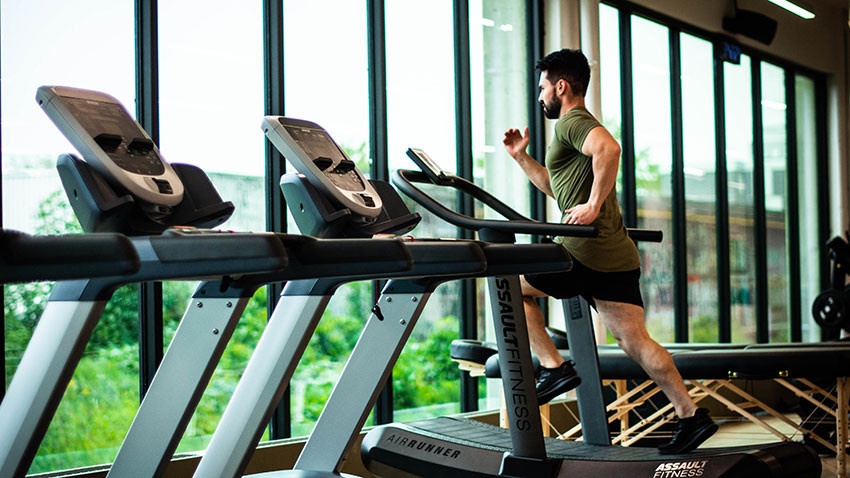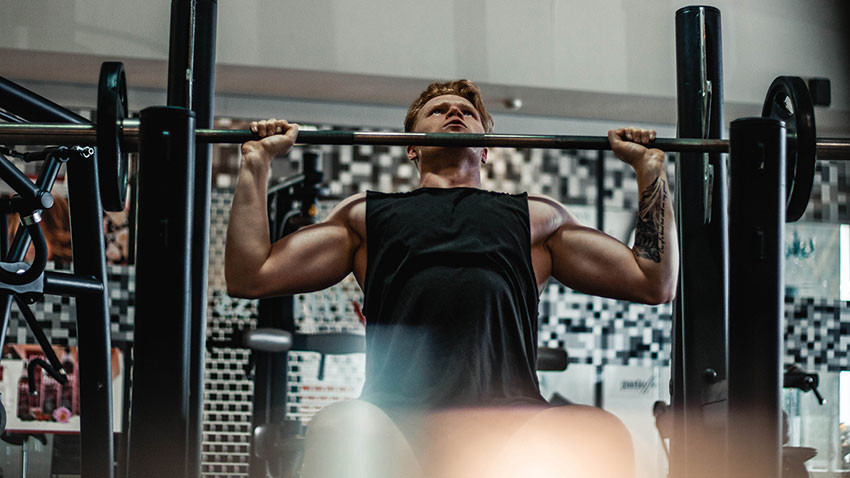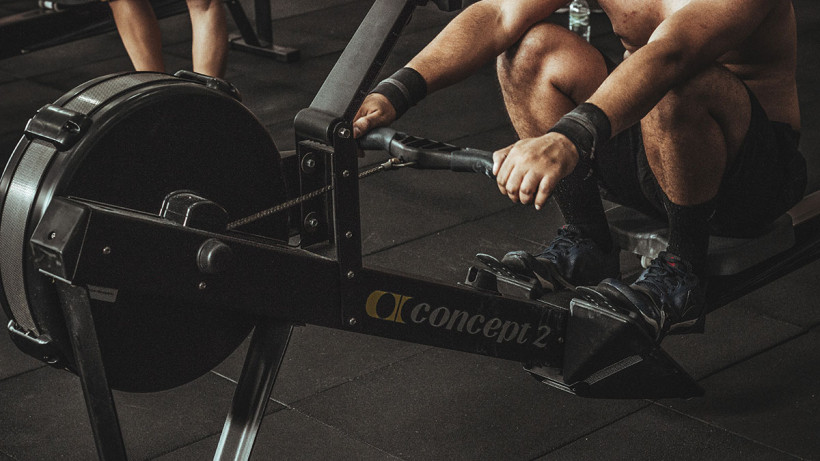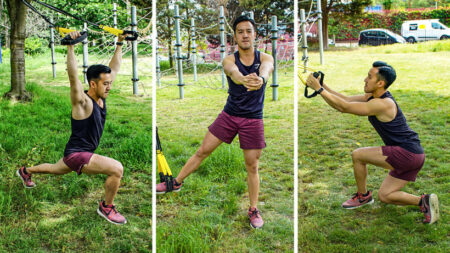The essential list of workouts you need to know
Deciding on a training plan can be a tricky process, especially if you’re new to the world of fitness. The industry is full of complex and often confusing workouts – CrossFit, HIIT, MetCon, TRX, F45 – all designed to sound like the ultimate way to get fit.
There is, however, no perfect workout. Like most things in life, choosing the right training method for you is at the core of being fit and healthy. Pick the format that fits into your routine and preferences and you’ll reap the benefits. Force yourself to do something you don’t like doing and it’ll be an uphill struggle all the way.
- Be the master of your domain: The best home gym equipment | The best home pull up bars
Here we run through the most popular workout formats around the world, explaining what they are, what they’re meant to achieve and what you can expect from each one. For us, none are better and worse than the others, they all just have a varied focus. They’re also rarely mutually exclusive concepts and the workouts will often cross over into each other.
For each one, we’ll cover of example workout that you try yourself before parting with your hard-earned money at a studio.
CrossFit

What is CrossFit?
CrossFit is probably one of the most well-known workouts around the world. Developed around 2000 by Gregg Glassman, a teenage gymnast who supplemented his gymnastics with a range of additional workouts, the format is used in thousands of locations around the world, as well as series of high profile competitions.
- Read more: The beginner’s guide to CrossFit
The idea of CrossFit is designed around combining a vast range of training styles to produce a workout that’s based on function. By that we mean all of the movements replicate real-life mechanics of the body instead of just focussing on looking good or isolating a particular muscle group.
That range of movements combines high-intensity interval training, Olympic weightlifting, plyometrics, powerlifting, gymnastics, girevoy sport (kettlebells), calisthenics and strongman training into a highly varied and challenging workout.
How does CrossFit work?
CrossFit is a company that lends its name to affiliate locations around the world. Those individual locations or ‘boxes’ use the CrossFit name and training format, although the intricacies of each one may differ.
CrossFit sessions vary every day and often contain a mix of mobility, technical training and something they call WODs (workouts of the day). Those workouts are normally a timed or rep-based and cover a selection of different exercises. The focus of these will change daily, however, there is a growing list of WODs popularised around the world – a list of the most well-known can be found here.
- Essential reading: The best CrossFit workouts
Unlike HIIT, CrossFit tends to incorporate a high level of technical exercises that need to be trained over a period of time. Beginners will often learn scaled, more simplified movements until they progress to the advanced level exercises.
What are the benefits of CrossFit?
The fundamental goal of CrossFit is to provide a well-rounded workout model that develops fitness, strength and technique. The combination of exercises doesn’t focus on one aspect but instead varies the focus on a daily basis. As well as improving in each category the functional elements of the workouts will help to improve the functional biomechanics of the body, from performing in sports to carrying the shopping.
Example CrossFit workout: Cindy
A “favorite” amongst CrossFitters, this 20-minute workout may look simple but trust us, after ten minutes it’s going to seem like a lot longer.
Complete as many rounds in 20 minutes as you can of:
- 5 pull-ups
- 10 push-ups
- 15 squats
MetCon
What is Metcon?
MetCon or ‘Metabolic Conditioning’ is a form of workout that’s primarily focused on exerting the cardiovascular system as well as training and developing muscles. It’s said that the term was first used by Arthur Jones, the inventor of Nautilus, in an October 1975 issue of Athletic Journal magazine who defined it as “the ability to work at a high level of intensity for a prolonged period of time“.
By maintaining a consistently high level of exertion throughout the workout, a MetCon session will train a varied series of muscle groups whilst maintaining a level of cardiovascular effort. That combination means that you’re not only getting fitter but your muscles are working to a level that causes an oxygen deficit and fatigue. As a result your muscles have to work long after you’ve finished training to take your body’s metabolism back to its normal state. It’s a process known as EPOC (excess post-exercise oxygen consumption).
How does Metcon work?

Although MetCon can be done as a standard workout format, the concept is often incorporated into other training methods. CrossFit and HIIT classes will frequently utilize MetCon methodology in their sessions as the format falls in with the same principles: Efficient, all-round workouts that perform a range of benefits.
Workouts generally combine a series of different exercises carried out with minimal rest. Those sets and reps tend to be based on completion instead of time as there’s a greater focus on form and exercise technique. Once a consistent set of exercises are done there’s usually a rest before the same or a new set of exercises are completed. Workouts tend to be between 25 minutes and 45 minutes.
What are the benefits of MetCon?
As well as the cardiovascular fitness benefits from training at a higher heart rate for a prolonged period, the most important aspect of MetCon – and the one you’re most likely to see quoted – is the metabolic demand placed on the muscles. It’s that demand that is said to cause the body to burn calories for up to two days after the workout.
In addition, the training of multiple muscles across the body mean you’ll be gaining strength benefits – although nowhere near what you’d achieve from specific strength training.
The MetCon format can be found in most studios and gyms, often without any sort of labeling. There are, however, many gyms and studios that host specific MetCon classes.
Example MetCon workout:
If you want a full-body MetCon workout to see what all the fuss is about then this six exercise treat should get you up to speed.
Perform four rounds with three minutes rest after each round.
- Squat jumps: 10 reps
- Renegade rows: 10 reps
- Weighted step-ups: 10 reps
- Plyo push-ups: 10 reps
- Kettlebell swing: 20 reps
- Close-grip pull-up or inverted row: 10-15 reps
HIIT

What is HIIT?
HIIT training, or high intensity interval training, is perhaps the most widely used term in fitness today, however its meaning has become somewhat generalized and a catch-all for most studio gym classes.
The HIIT format is a training style that utilizes shorter bursts of exercise, often between 30 seconds to a couple of minutes, followed by a short period of rest. It’s also not exclusive to gym workouts and has been used in running sessions for decades.
It’s a training format popularised due to the fact it offers a quick and efficient way to improve a large number of physical attributes, along with offering an exercise format that people often find more enjoyable than many other workout styles.
How does HIIT work?
The HIIT format is less specific than training methodologies like Tabata and MetCon, hence why it’s often used to describe exercise classes you’ll find in most studios and gyms.
The format can change from class to class and encompass a wide range of equipment to deliver the same effect – short, intense bursts of exercise that require the body to quickly switch from one muscle group to another whilst the heart rate rapidly increases. These short bursts should be forcing the body to work at 80-100% of maximum heart rate.
A HIIT format workout can include an almost limitless range of exercises. Some workouts will focus on bodyweight movements whilst others utilize anything from treadmills and assault bikes to rope climbs, spin bikes and TRX.
Although a true HIIT session shouldn’t last longer than 20 minutes, as most people can’t sustain an 80-100% max heart rate for longer than that, most gyms and studio classes will last between 30 minutes and 45 minutes.
Commercial HIIT classes also tend to focus more on exertion and effort instead of technique and form. This is largely due to the number of people in a class, so it’s likely that the exercises and movements will be significantly less technical that a CrossFit or MetCon session.
What are the benefits of HIIT?
The fundamental reason that HIIT has become so popular is due to the fact that it offers a large number of fitness benefits in a short period of time. This is why it’s become so commonplace for those people with busy lives needing to fit an efficient workout into the working day.
Key benefits of a HIIT session include cardiovascular fitness improvements, strength training, balance and co-ordination, calorie-burning and developments in fast-twitch muscle fibers.
The other main benefit of HIIT is that many people prefer the quick and varied range of exercises of a class as opposed to other forms of fitness, like running or strength training in the gym. A HIIT class is often a highly motivating and fast-paced workout where the trainer will create an atmosphere conducive to training at a high level of exertion.
Example HIIT workout
Eight exercises, each one carried out for 45 seconds then 15 seconds rest then onto the next one. Keep the intensity high throughout the workout. The full series should take you 24 minutes.
Group 1 – repeat three times
- High knees (hands in the air)
- Burpees
- Squat jumps
- Mountain climbers
Group 2 – repeat three times
Tabata

What is Tabata?
Although the details of Tabata training sound similar to MetCon and HIIT, the format used incorporates a number of specific factors that make it distinct from other workout types.
The process was created by Japanese scientist Professor Izumi Tabata from the National Institute of Fitness and Sports in Tokyo back in 1996. In his research, Professor Tabata found that people that worked out for four days a week at high intensity for 4 minutes (on a stationary bike), along with one session of steady-state training had a significant improvement in aerobic and anaerobic systems. This was compared to people that did an hour of moderate exercise five times a week over a six-week period.
From those findings, Tabata was born. A four-minute workout done at high intensity with minimal rest.
How does Tabata work?
There are essentially two fundamental aspects of a workout that need to be followed for it to be classified as Tabata. The first is the time breakdown of 20 seconds of work and 10 seconds rest repeated eight times, the second is the maximum level of exertion that’s required during each 20-second interval.
The exercises that are used can be anything that forces and allows the body to work at maximum capacity for 20 seconds, from press-ups and squats to running, exercise bikes or skipping. The Tabata format can also be extended to multiple sets of different exercises. For instance, you could do four minutes of press-ups (with 10-second rest intervals) followed by a four-minute spin block, and so on, allowing for sufficient rest between each set. Alternatively you could mix up the exercises within a 4-minute block.
It’s important to note that working at maximum capacity for four minutes is hard. Including addition four minute blocks into a workout, especially if you’re a beginner, is likely to mean you’re no longer able to work at your maximum level.
Few gyms and studios have strict Tabata classes – although the term is used incorrectly quite often. However, some workout classes may have a Tabata section within them.
What are the benefits of Tabata?
As well as the obvious workout time benefits of using Tabata, according to Professor Izumi Tabata, the training style sees improvements in VO2 max/aerobic capacity and anaerobic fitness when compared to steady-state training.
Example Tabata workout
8 sets, 20 seconds an exercise, 10 seconds rest. You can either stick with one exercise for four minutes then move on to the next one after four minutes or mix them up into the 4-minute block. Either way, it’s going to hurt.
- Press-ups
- Jump squats
- Burpees
- Inverted row
- Power lunges
German Volume Training

What is German Volume Training?
GVT is a format of weight training that was largely popularised by Charles Poliquin in the 1990s, although its origins go back significantly further than that.
The principle is relatively simple and sees weightlifters carrying out ten sets of ten reps (100 in total) with a specific rest period in-between each one.
The workout format is famous for its strict and rigid rules, not just in sets and reps but rest time, tempo and how the training splits work throughout the week. The method is seen as being one of the most efficient ways to increase muscle size.
How does German Volume Training work?
Although the 10 rep, 10 set system for GVT may sound simple, there are in fact a number of additional parameters associated with the workout format.
Each rep must be using the same weight, to begin with that should be around 60% of the 1 rep max. It may seem easy for the first couple of sets but over the full 100 reps that become increasingly hard. If you manage to complete 100 reps using the same weight, then this can be increased the next time the muscle group is worked.
Rest in-between each set should be between 60-90 seconds and aim to not focus on a specific muscle group more than once over the course of five days.
If you can’t make the 10 reps on a set, put the weight down then continue with the next set, noting down how many reps you managed for the next time you do the workout.
What are the benefits of German Volume Training?
Firstly, GVT promotes a high level of hypertrophy. By that we mean the amount of reps focussing on one muscle group places a great deal of stress on the muscle fibers causing them to mend themselves and grow larger.
Also, as the weight being used is significantly lower than the person’s 1RM, the exercises focus on size instead of strength. The upshot of increasing size – as well as aesthetic positives – is an increase in metabolism and how many calories your body burns.
Thirdly, GVT is largely concerned with compound movements. So a well-devised GVT plan is an efficient way to work an enormous number of muscles quickly and extremely effectively.





